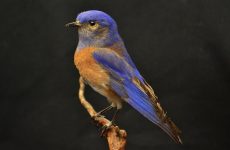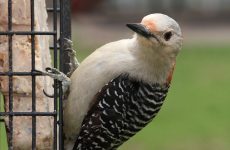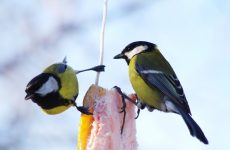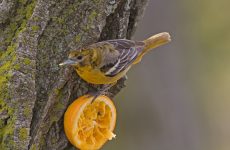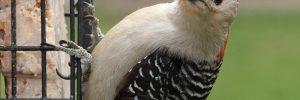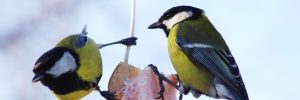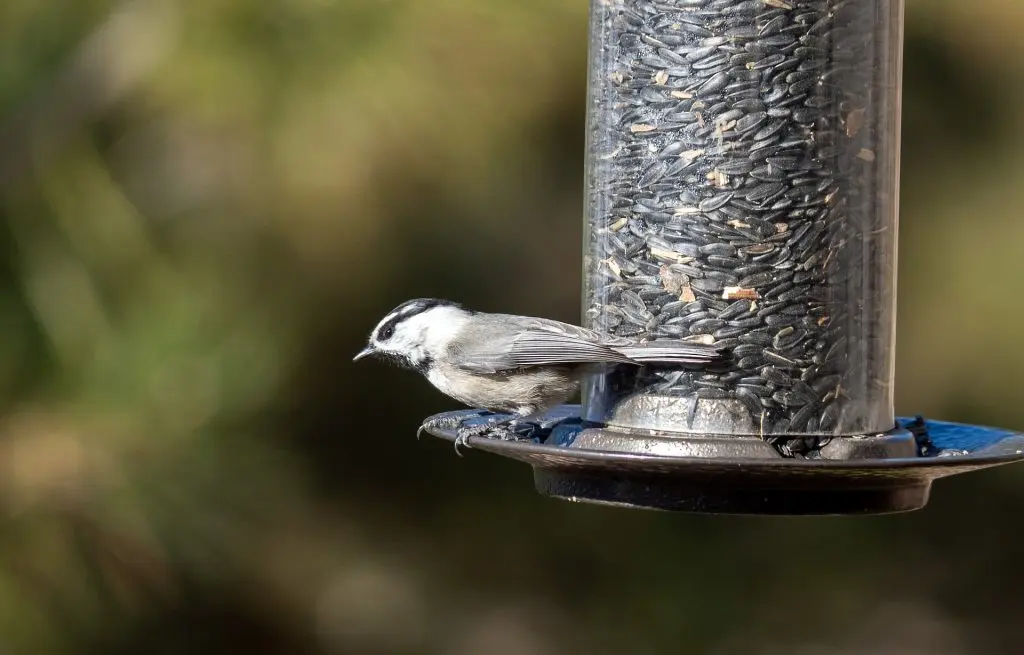
Adding a feeder to your garden is a wonderful way to attract birds and enjoy wildlife from your backyard. Birdwatching is so relaxing and fun that it has become a popular hobby worldwide. You don’t need to travel far with a feeder to participate in this activity! But how do you lure birds to a feeder once you have a feeder?
Attract birds to feeders by creating a garden that mimics their natural habitat. Providing them with water, shade, and shelter from predators will make them feel safe enough to feed. Different foods like fruits, nuts, and seeds attract different bird species.
Birds have excellent vision and will eventually notice a new feeder, although it may take a while. Luckily, taking a few simple steps will lure them close and keep them returning to your feeder. Follow our detailed guide to attract birds to your feeder and enjoy the satisfying pastime of birdwatching.
Watching birds enjoy the food you set out for them in your feeders is a satisfying experience. Giving them a variety of food, shelter, water, and protection against predators will create a haven for birds that will allow you to enjoy them season after season.
Four Easy Steps To Attract Birds To A Feeder
You will first need a birdfeeder to attract birds to your feeder. If you don’t already have a feeder, it is worth looking into the different types of feeders to find one that best suits you.
There are a variety of birdfeeders catering to different types of birds. For pigeons and doves, a simple ground feeder will do. See the table below for a detailed guide to the different feeders and the birds they attract:
| Feeder | Food | Birds |
| Tube feeders | Sunflower seeds (black-oil, hulled and striped), nuts | Chickadees, finches, and titmice and nuthatches |
| Fruit and nectar feeders | Berries, raisins, sugar-water | Hummingbirds and orioles |
| Thistle feeders | Thistle seeds | Finches, redpolls, pipe siskins, and titmice |
| Hopper feeders | Mixed dry seeds | Cardinals, jays, red-winged blackbirds, and grackles |
| Suet feeders | Suet, bird cakes, peanut butter pudding | Woodpeckers, chickadees, nuthatches, and titmice |
| Ground feeders | Cracked corn, millet, oats | Pigeons, doves, cardinals, juncos, and sparrows |
Adding two or more different feeders to your garden is preferable for attracting a diverse crowd of birdlife.
Step One: Create A Bird-Friendly Garden
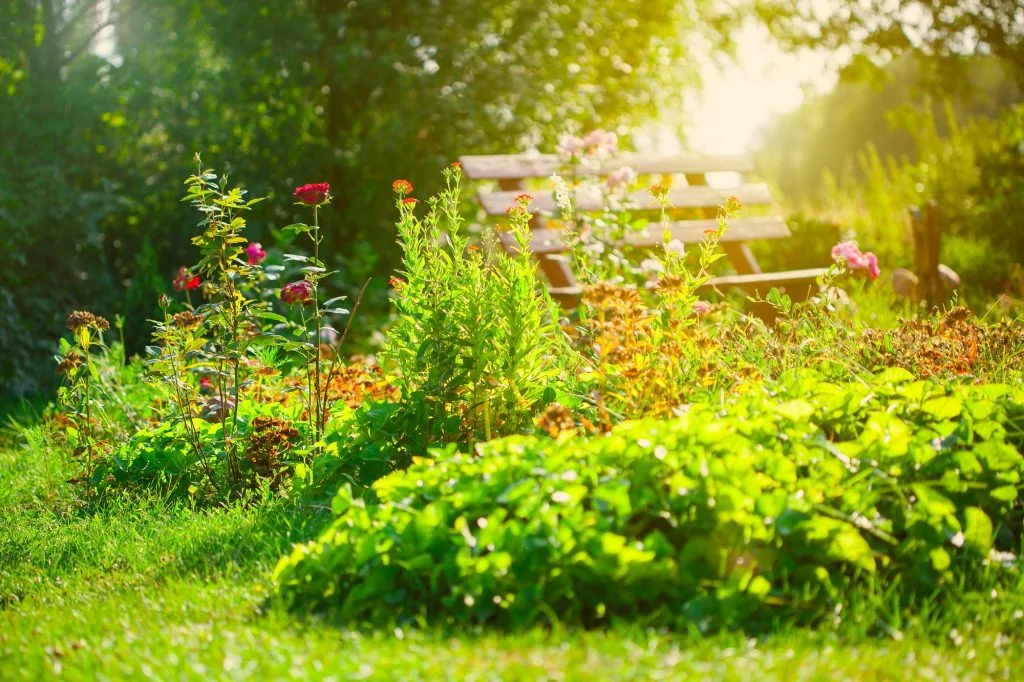
Like humans, birds have three basic needs: water, shelter, and food. Turn your garden into a bird refuge by providing them with more than just food. Adding some shade and providing them with water will give them everything they need, and they may decide to nest in your garden too!
Plants
Indigenous trees are a wonderful addition to any garden. They benefit birds (and humans, too) by adding shade and many other species like butterflies, insects, and more. Indigenous trees also provide birds with a nesting place, while some feed on their fruits and seeds.
Additionally, the cover that trees provide creates shelter from predators like hawks. Birds will feed more frequently when they feel safe.
Water
The next step to creating a bird-friendly garden is to add a water source. Not only do birds need drinking water, but they also enjoy bathing, and watching them frolic in the water is quite a pleasing sight!
It is best to place your water source under cover of a tree. Not only do birds prefer the cover and protection, but the shade will keep the water cool.
A water feature with a pump that will keep water flowing helps prevent outbreaks of mosquitos. Investing in a water fountain is best if you live in warm, humid areas. The bonus of a water fountain is that birds, especially newcomers or migratory birds, will be more likely to visit your garden as they hear the sound of running water.
Alternatively, a simple bird bath will suffice if you have limited space. Keep in mind, though, that bird baths will require regular cleaning.
Some birds, like hummingbirds, prefer drinking and bathing in the mist. Installing misters in your garden is a wonderful way to attract these magnificent birds, and your plants will love it too!
Additional Enrichment
Lastly, provide birds with additional enrichment. Although this is optional, hanging artificial nests and little hideouts from trees will encourage them to spend more time in your garden and give them more places to hide from predators.
Step Two: Offer Birds An Assortment Of Food

Filling your feeders with a selection of different seeds will attract a diverse flock of bird species to your garden and create an enriched birding experience.
Be sure to include some of the following foods:
- Suet – loved by woodpeckers and other birds that require high fat in their diets
- Mealworms – ideal for insect-eating birds like bluebirds
- Sunflower seeds – black oil, striped and hulled are all popular. Sunflower seeds attract the most bird species, so don’t exclude these seeds!
- Millet – preferred by ground feeders
- Corn – another favorite of ground feeders. Larger pieces are great for larger birds like guinea fowl, while fine corn will attract towhees, sparrows, and jays.
- Thistle – attracts chickadees, finches, titmice, and sparrows
- Nectar – a simple mixture of water and sugar for hummingbirds
- Fruits – attract bluebirds, jays, woodpeckers, tanagers, and nuthatches
- Peanuts – keep the shells on for woodpeckers
- Sorghum – pigeons love red sorghum!
- Oats – finches, pigeons, sparrows, and blackbirds like oats
- Wheat – the same oat-loving crowd will eat wheat too
You can make your seed mixes or bird “cakes” if you feel creative. There are many recipes online; most are inexpensive and easy to make. You can make homemade suet, for example, with peanut butter.
Step Three: Place Bird Feeders Strategically In Your Garden
After you have planned your garden and added a water source, you can add your feeders. If you have multiple feeders, adding different types of food to different feeders is best. Hang feeders at varying heights and a distance from one another, preferably in different trees.
Doing so will attract birds of similar size and diet to each feeder and give them a fair chance at food as the feeders will be less crowded.
It is best to place feeders far from any windows or, if practical, very close (three feet or closer) to windows. While placing feeders away from windows won’t keep them from occasionally flying into them, it will help reduce the number of accidents. Placing them close to windows is a safer option and allows you to watch them closely.
Step Four: Keep Birds Safe From Cats And Other Dangers
While attracting birds to your garden can be a wonderful experience, it’s important to ensure they are safe from harm.
Unfortunately, windows pose a risk to birds, and studies show that birdfeeders increase collisions with windows in residential areas between 1.5 and 2%. In addition to placing feeders from windows, you can do a few other things to prevent injuries from window collisions.
Putting stickers or screens on your windows or having feathers on fishing lines are very effective. Closing your blinds and placing indoor plants away from windows help too.
Cats are a big threat to birds. If you have cats, keep them inside or put a small bell on their collar during bird feeding. Placing feeders close to hideouts or shrubs will keep birds safe from neighborhood cats and other predators.
Many birds include plants in their diet, so avoid using pesticides in your garden. There are many non-toxic ways to keep your garden plants healthy; luckily, bug-eating birds will take care of the pests.
Adding birdhouses will provide birds with a place to nest and a hideout from predators.
Cleaning Your Bird Feeder

Many seeds and bird food can rot when left outside for long periods and spread disease among birds. Therefore, it’s important to clean your feeder regularly.
You can clean most feeders twice a year, but fruit and nectar feeders can attract flies and other pests and can be cleaned more often. If you live in a warm, humid climate, the feeders will also need to be cleaned more often as the climate will increase the rate of mold in seeds.
So follow these steps to get the birds flocking to your feeders.

